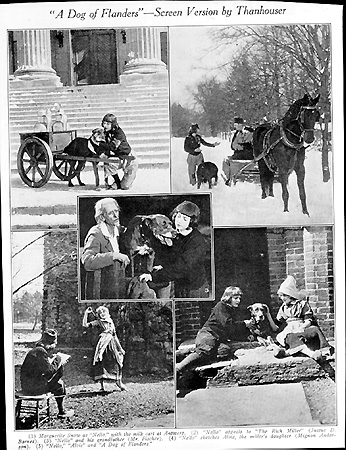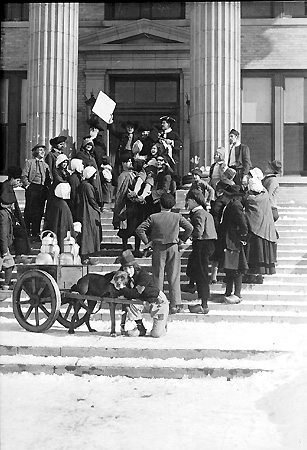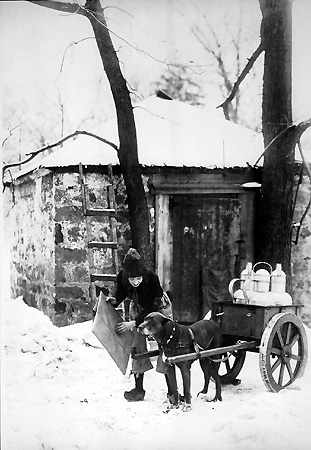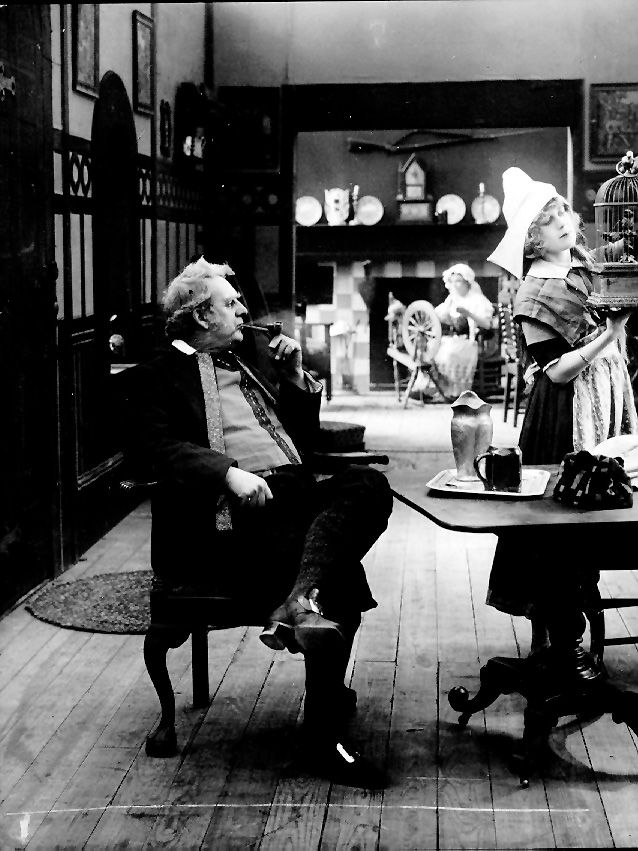 Volume II: Filmography
Volume II: Filmography Volume II: Filmography
Volume II: Filmography



Advertisement from Reel Life, May 16, 1914, with Marguerite Snow, Mignon Anderson. (F-783)
Production still during filming on the steps of New Rochelle City Hall. Courtesy Dominick Bruzzese. (F-784-2)
Production still courtesy of the American Museum of the Moving Image/Lawrence Williams Collection. (M-4-X)

Justus D. Barnes and Mignon Anderson in A DOG OF FLANDERS. Courtesy of Alan Brock (R-11)
May 19, 1914 (Tuesday)
Length: 2 reels
Character: Drama
Director: Howell Hansel
Scenario: From an 1872 story by Ouida (pseudonym of Maria Louise de la Ramée)
Cast: Marguerite Snow (Nello, a boy), Mr. Fischer (Nello's grandfather), Justus D. Barnes (the rich miller), Mignon Anderson (the miller's daughter, Alois), Carey L. Hastings (the miller's wife), James Cruze, Flora (the "Dog of Flanders")
Locations: New Rochelle; New York City
Notes: 1. Some scenes with Mignon Anderson and the dog were filmed in front of St. Patrick's Cathedral in New York City. Other scenes were filmed in New Rochelle, including in front of the City Hall. 2. This was one of Mignon Anderson's best known films. 3. The title appeared interchangeably with the correct form, A Dog of Flanders, and The Dog of Flanders in Thanhouser publicity.
BACKGROUND OF THE SCENARIO: A Dog of Flanders, a children's story, and one of several tales Ouida wrote about animals, was first published in 1872 and became a worldwide favorite. Ouida was the pseudonym of the author, Maria Louise de la Ramée (January 1, 1839-January 25, 1908). Moths, a story by Ouida, published in 1880, was also dramatized for the screen by Thanhouser (released by Mutual in September 1913), as was Under Two Flags, an Ouida story published in 1867, of which Thanhouser produced a screen version, released on July 7, 1912.
SYNOPSIS, Reel Life, May 16, 1914:
"Nello lived with his aged grandfather near Antwerp. They were very poor, and the grandfather limped about with a cart in which he carried milk to the city. A poor dog, beaten and misused by a cruel tinker, was left by the roadside to die. Little Nello found him and adopted him. Soon the animal was able to get around again upon his stout legs and was ever after the faithful friend and servant of the household. He drew the milk wagon to town for the grandfather, trotting along cheerfully between the shafts, and when the old man became too weak to keep up his route, Nello, now quite a lad, took his place. The boy's ambition was to become a great artist, and on his visits to Antwerp he would steal into the cathedral to stand spellbound before the wonderful Rubens.
"Near Nello's cottage lived a rich miller whose little daughter had been his playmate in childhood. But the miller had refused to let the poor boy visit Alois as they grew older. He feared that his daughter might get romantic notions in her head about this penniless lad. Nello worked all the harder at his sketching, resolved to become famous and win the miller's regard. A competition was held in Antwerp, open to all untrained artists under 18 years of age, and Nello submitted a drawing. But the prize and the art scholarship he so coveted were awarded to the son of an influential citizen, though the rich boy's work had shown far less talent than his.
"Brokenhearted, Nello went home, to find that his grandfather had died and that the cottage had been confiscated. All that he had left in the world was his dog, and the two of them went sadly forth to shift for themselves. Struggling through a heavy snowstorm one day, Nello came upon a wallet. Something told him that it belonged to the rich miller. He took it to the miller's house, giving it to his wife. Begging her to take care of his dog in its old age, Nello turned away again into the storm. The miller wished to make amends to the boy. But when, after long seeking him, he found Nello, it was too late. His faithful dog had made his escape from the miller's house and had gone to share his master's fate. The miller found them together, dead in the snow."
REVIEW, The Morning Telegraph, May 17, 1914: This review is reprinted in the narrative section of the present work.
REVIEW, The Moving Picture World, May 23, 1914:
"This is a peculiar sort of a two-reel picture play, and many beautiful winter scenes are embraced in its plot. The leading actor is a beautiful and faithful dog. An abusive master has beaten it and left it in the snow, where it is discovered by a little milk peddler who befriends it. An interesting little love story runs through the plot which terminates in quite a sad ending. This is a well-directed picture in every respect and a lesson is taught to selfish and unreasonable individuals."
REVIEW, The New York Dramatic Mirror, May 27, 1914: This review is reprinted in the narrative section of the present work.
# # #
May 22, 1914 (Friday)
No Thanhouser release because of the two-reel film of the preceding Tuesday.
# # #
Copyright © 1995 Q. David Bowers. All Rights Reserved.